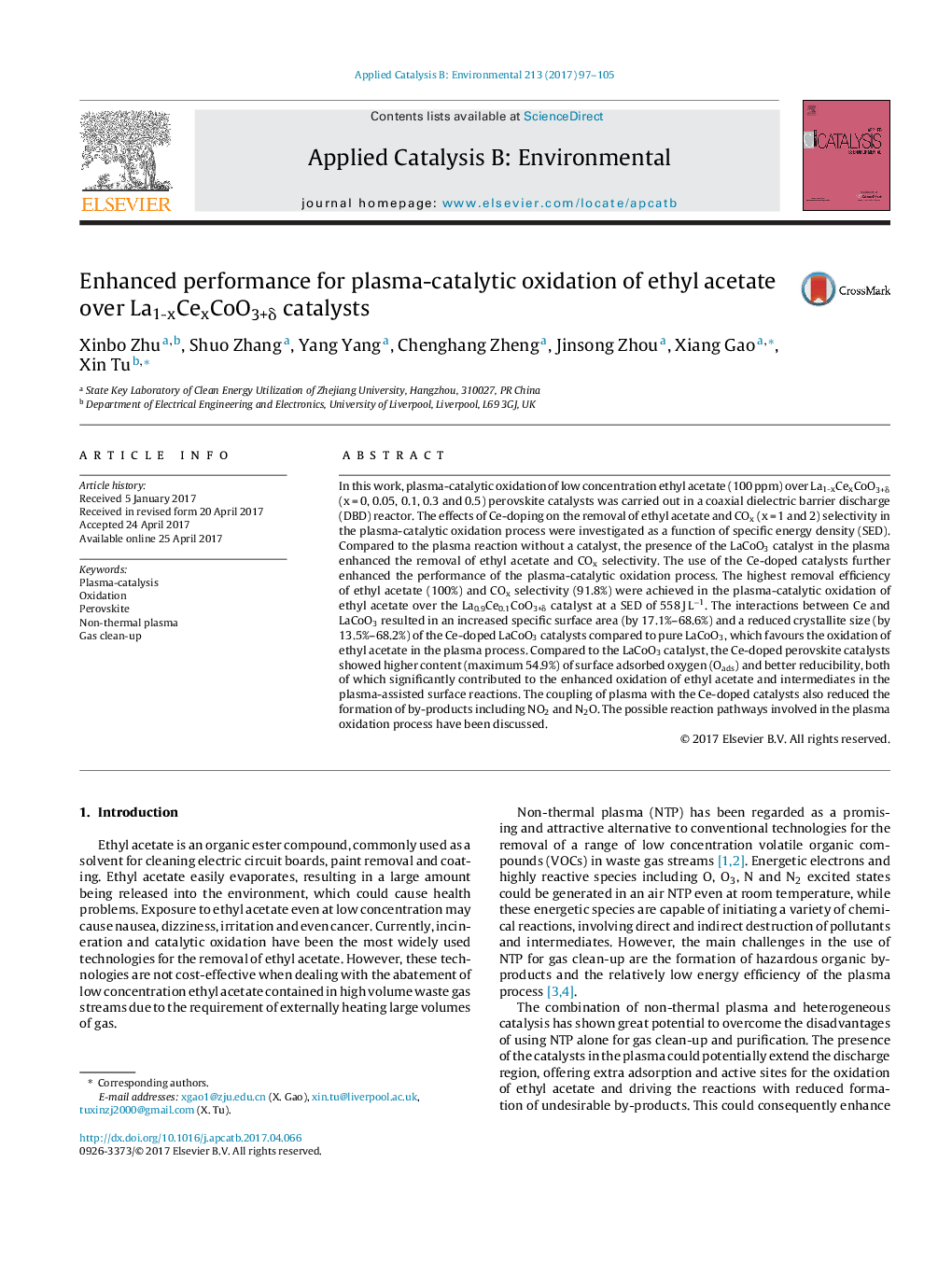| Article ID | Journal | Published Year | Pages | File Type |
|---|---|---|---|---|
| 6453880 | Applied Catalysis B: Environmental | 2017 | 9 Pages |
â¢Coupling plasma with Ce-doped catalysts enhanced plasma oxidation of ethyl acetate.â¢La0.9Ce0.1CoO3+δ catalyst showed the highest removal efficiency and COx selectivity.â¢Ce-doped catalysts generated more surface adsorbed oxygen species for oxidation.â¢Combining plasma with Ce-doped catalysts reduced the formation of by-products.
In this work, plasma-catalytic oxidation of low concentration ethyl acetate (100 ppm) over La1-xCexCoO3+δ (x = 0, 0.05, 0.1, 0.3 and 0.5) perovskite catalysts was carried out in a coaxial dielectric barrier discharge (DBD) reactor. The effects of Ce-doping on the removal of ethyl acetate and COx (x = 1 and 2) selectivity in the plasma-catalytic oxidation process were investigated as a function of specific energy density (SED). Compared to the plasma reaction without a catalyst, the presence of the LaCoO3 catalyst in the plasma enhanced the removal of ethyl acetate and COx selectivity. The use of the Ce-doped catalysts further enhanced the performance of the plasma-catalytic oxidation process. The highest removal efficiency of ethyl acetate (100%) and COx selectivity (91.8%) were achieved in the plasma-catalytic oxidation of ethyl acetate over the La0.9Ce0.1CoO3+δ catalyst at a SED of 558 J Lâ1. The interactions between Ce and LaCoO3 resulted in an increased specific surface area (by 17.1%-68.6%) and a reduced crystallite size (by 13.5%-68.2%) of the Ce-doped LaCoO3 catalysts compared to pure LaCoO3, which favours the oxidation of ethyl acetate in the plasma process. Compared to the LaCoO3 catalyst, the Ce-doped perovskite catalysts showed higher content (maximum 54.9%) of surface adsorbed oxygen (Oads) and better reducibility, both of which significantly contributed to the enhanced oxidation of ethyl acetate and intermediates in the plasma-assisted surface reactions. The coupling of plasma with the Ce-doped catalysts also reduced the formation of by-products including NO2 and N2O. The possible reaction pathways involved in the plasma oxidation process have been discussed.
Graphical abstractDownload high-res image (157KB)Download full-size image
